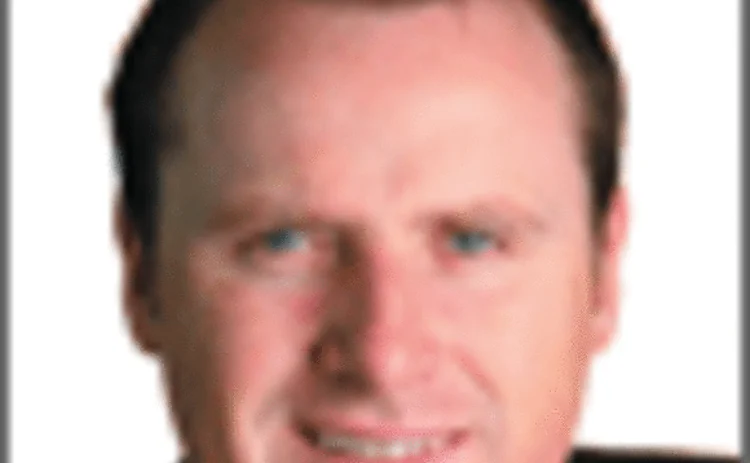
Best in Ireland - IIB Bank

IIB Bank is a wholly owned subsidiary of Brussels-based structured products powerhouse KBC Group. The Irish bank, which focuses on the country's high-net-worth market, has certainly benefited from informal links with its parent company. "Although IIB operates on a standalone basis - reporting back to KBC - we have certainly worked on product concepts in co-operation with our Belgian counterparts that have been beneficial for us," Donnelly says. "Having said that, the structured products market in Ireland is very different to that in the Benelux region, and so we have developed our own expertise."
The bank tends to avoid taking 'off-the-shelf' products from the big structuring institutions, Donnelly says. Instead, IIB adopts a blank-canvas approach to product development. "Rather than structuring and distributing off-the-shelf products promoted by the investment banking community, we adopt an approach which is completely client-focused," he says.
Indeed, IIB has been at the cutting edge when it comes to introducing a variety of different asset classes in its structured products range, predominantly offering products with a EUR10,000 minimum investment.
Irish pioneers
"In mainstream asset classes, we were the first in the Irish market to use new underlyings such as EPRA (the property index), DJAIG (the commodity index) and IBoxx (the government bond index)," Donnelly says. "And in the alternative space we have been a pioneer and leading promoter of structures linked to hedge funds, private equity and currencies. In many instances, we are confident that the innovative nature of our products has been cutting edge, not just in an Irish context, but also a European one."
It helps that IIB has a strong distribution channel, especially when one considers that the bank does not have a branch network through which to sell its structured products. The bank does, however, have representatives in Dublin, Cork and Galway to deal directly with high-net-worth clients. And IIB has links with almost 300 appointed intermediaries, including independent financial advisers, accountants, boutique investment firms, pensioner trustees and family offices which sell IIB-labelled and co-labelled products on to investors.
An example of a particularly innovative product to come from the IIB stable is the Best Performance Bond, launched in January 2006 with further tranches in May and August. "Quite simply, this was a first-of-its-kind in the Irish market," Donnelly claims.
The bond consisted of three portfolios, labelled aggressive, neutral and defensive. Each consisted of a different exposure to equity, commodities, property and government bonds. After six years, investors receive the return on the best performing of the three portfolios, or, if all three portfolios have posted negative returns, they get back their initial investment. Alternatively, investors who opted for only 90% capital security could benefit from 150% participation in the performance of the best-performing portfolio.
Momentum, meanwhile, is one of IIB's latest products, distributed by Mercury Wealth. The product offers exposure to the FTSE 100, DJ Eurostoxx 50, S&P 500, SMI and Nikkei 225, weighted according to the OECD's opinion on the area with the best economic outlook. Investment is over six years, with 100% capital protection at maturity. Investors benefit from 80% of the sum of the quarterly performances of the component indexes, Donnelly says, and the product is rebalanced every quarter according to the OECD's leading economic indicators.
Other major successes for IIB include the Property Equity Performer launched in May 2006, which provides exposure to worldwide property and equity markets with a bias towards the asset class that has performed best over the investment period.
WHY IIB BANK WON
IIB Bank's structured products business was established only four years ago, when its head of private banking, Mark Donnelly, realised that high-net-worth investors were not adequately catered for. There was a great opportunity for IIB to step in and target the mass affluent as well as the ultra-high-net-worth segment, and four years later the results speak for themselves.
Only users who have a paid subscription or are part of a corporate subscription are able to print or copy content.
To access these options, along with all other subscription benefits, please contact info@risk.net or view our subscription options here: http://subscriptions.risk.net/subscribe
You are currently unable to print this content. Please contact info@risk.net to find out more.
You are currently unable to copy this content. Please contact info@risk.net to find out more.
Copyright Infopro Digital Limited. All rights reserved.
You may share this content using our article tools. Printing this content is for the sole use of the Authorised User (named subscriber), as outlined in our terms and conditions - https://www.infopro-insight.com/terms-conditions/insight-subscriptions/
If you would like to purchase additional rights please email info@risk.net
Copyright Infopro Digital Limited. All rights reserved.
You may share this content using our article tools. Copying this content is for the sole use of the Authorised User (named subscriber), as outlined in our terms and conditions - https://www.infopro-insight.com/terms-conditions/insight-subscriptions/
If you would like to purchase additional rights please email info@risk.net
More on Awards
Joining the dots: banks leverage tech advancements for the future of regulatory reporting
The continued evolution of regulatory frameworks is creating mounting challenges for capital markets firms in achieving comprehensive and cost-effectiveawa compliance reporting. Regnology discusses how firms are starting to use a synthesis of emerging…
Markets Technology Awards 2024 winners' review
Vendors spy opportunity in demystifying and democratising – opening up markets and methods to new users
Derivatives house of the year: JP Morgan
Risk Awards 2024: Response to regional banking crisis went far beyond First Republic
Risk Awards 2024: The winners
JP Morgan wins derivatives house, lifetime award for El Karoui, Barclays wins rates
Best product for capital markets: Murex
Asia Risk Awards 2023
Technology vendor of the year: Murex
Asia Risk Awards 2023
Best structured products support system: Murex
Asia Risk Awards 2023
Energy Risk Asia Awards 2023: the winners
Winning firms demonstrate resiliency and robust risk management amid testing times







